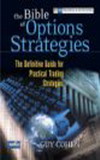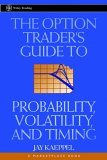Book Review - The Option Advisor

Those of you familiar with options would probably have heard of Bernie Schaeffer. An options expert, he is the chairman & CEO of http://www.schaeffersresearch.com and a frequent guest on TV and financial magazines
As this book is focussed on options trading, I found myself taking a longer than usual time to complete reading this book, simply because options & the trading of it is harder to understand than stocks. The Option Advisor is divided into 2 parts: Theory & Foundations; Application
In the first part, he compares expectational analysis vs. fundamental and technical analysis. His combination of expectational analysis with contrarian approach suggests buying on low expectation instead of merely low price as "cheap can get cheaper". I fully subscribe to this as many times, we see stocks move on expectation and nothing else has changed. Schaeffer talks about how to select the right stocks by using sentiment and technical indicators. I enjoyed chapter 4 "Managing Your Options Portfolio to Maximize Reward and Minimize Risk" the most. Risk management is one of the most important concepts in trading and here, he drives home this point by comparing the P&L of two traders.
Moving on to the next section, things are starting to get more exciting. He shares the different approaches to options trading, from aggressive strategies (what he calls the baseball strategy), Quick Trades (what I would call short term trading with duration of <1 week), LEAPS (Long-term Equity AnticiPation Securities) to conservative approach like credit spreads. These approaches demonstrate the versatility of options and you would probably find a strategy or two here which you like. If you have already started trading, you will probably find the next two chapters on selecting brokers, opening trading account to doing research on the internet to be of no value add or maybe even outdated (I think this book is written almost ten years ago)
If you are just starting out on options trading, this is quite a good book to learn more about open interest, options volume, implied volatility and the various options trading strategies. However, be prepared to take more time to digest this book.
My grading review: B


















0 Comments:
Post a Comment
<< Home